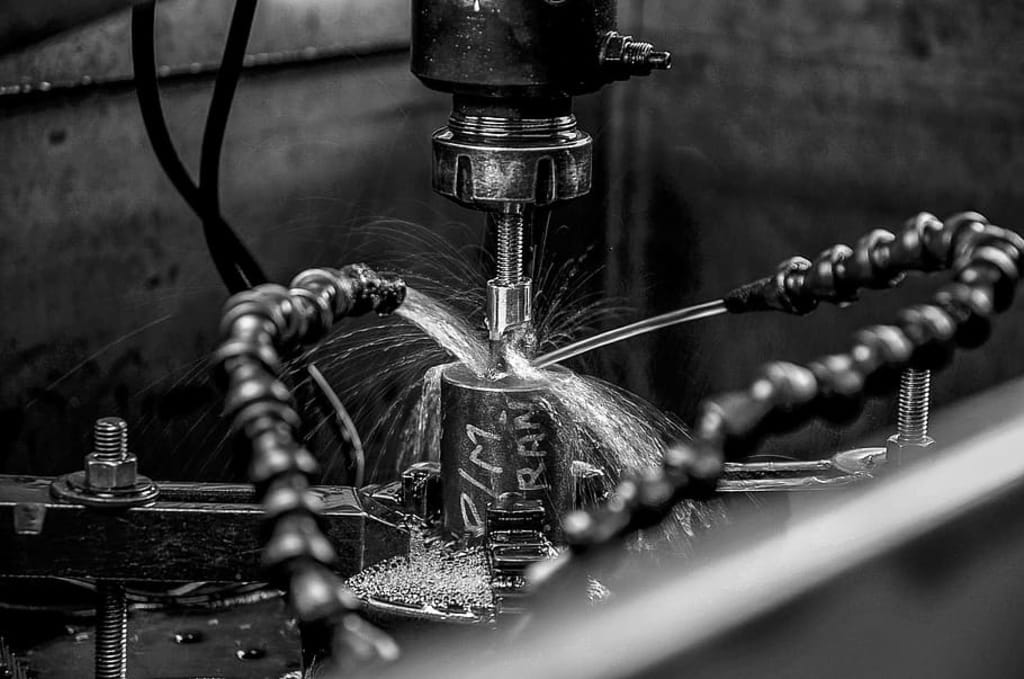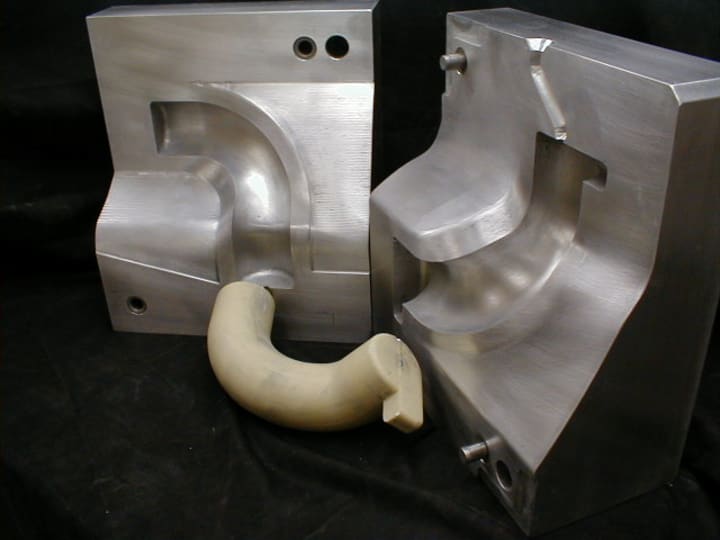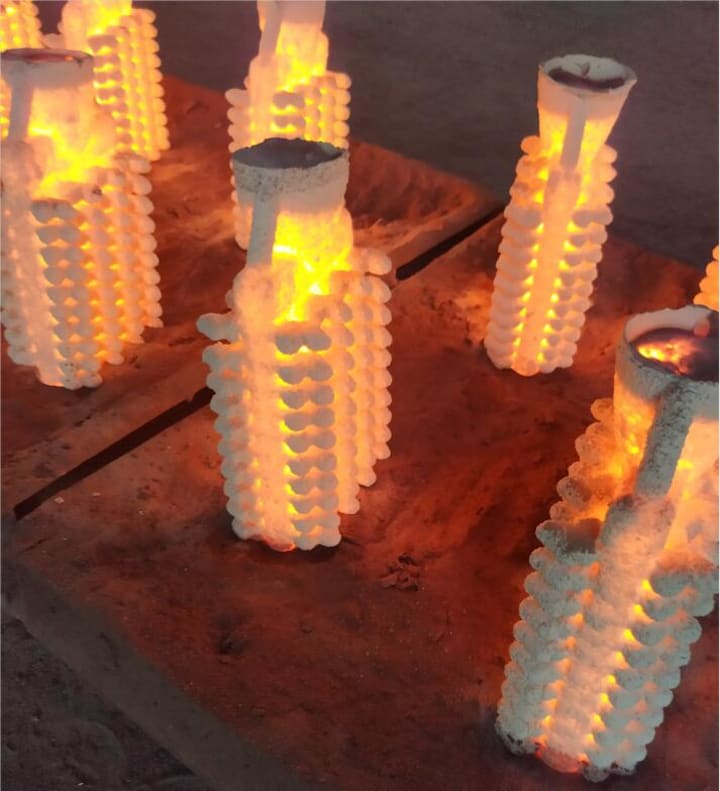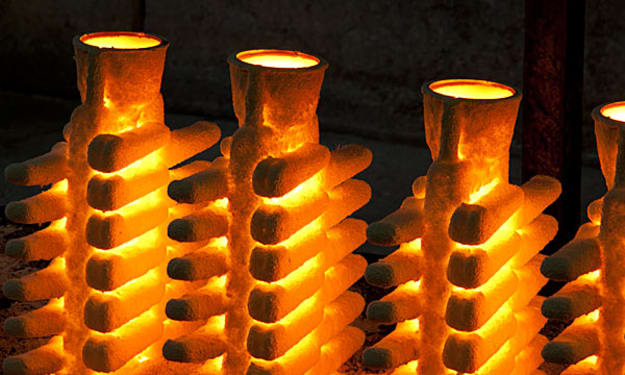What is a casting mold
The types of casting molds and the differences between them

The types of casting molds and the differences between them
Casting mold is a chamber that is embedded in materials such as sand, plaster, metal and…, so that the melt after filling this chamber and freezing in it, takes the shape of the chamber. The mold is so important in casting that it can be said that it is possible to make a healthy casting piece with the desired specifications by using a suitable mold. In general, from a metallurgical and economic point of view, the molds are divided into permanent and temporary categories.
Permanent Templates
Molds that are frequently used in the manufacture of castings are called permanent molds. The material of these molds is metal and is usually made of cast iron, steel and bronze. The choice of mold material is based on such things as the high melting point of the mold material compared to metal or cast alloy, having the least dimensional changes and the desired abrasion resistance. Permanent molds may be made by casting and then machined and polished to achieve the final dimensions. These molds are commonly used to make parts from metals and non-ferrous alloys such as aluminum, magnesium, zinc, lead, copper and their alloys, as well as to make parts from cast iron.

Advantages:
High production speed, dimensional accuracy and also creating desirable metallurgical specifications.
Limitations:
The limitations of using permanent molds are: high mold making costs, unsuitable for casting metals with high melting point, for example steels, uneconomical in the production of large and small parts and also shaped parts.
Permanent molds are divided into three categories in terms of filling by the melt: gravel, gravity or weight, under pressure and centrifugal pressure.
Temporary Templates
Molds that break down after each casting as the piece is removed are called temporary molds. These molds, whose constituents are generally in the form of a mixture of refractory sand particles; Adhesives and other materials can be made in three ways:
By pounding and compacting a wet mixture around the model; By applying a free-flowing mixture to the dry around the shell molding model; By freely releasing the mixture as a liquid slurry around the precision molding model.

In general, the method of making the mold and the equipment required for this work were determined according to the molding materials. For example, in wet sand molding, which is one of the oldest molding methods, a mixture of sand molding including sand, glue, water and additives is used to prepare the mold.
Due to the nature of this mixture, it is obvious that in order to form the mold material, the desired mixture must be pounded and compacted around the model. The equipment and machinery needed to make these molds are made and used accordingly. For example, in the manual method, the pounding operation is performed by a tool called percussion, while in the mechanical methods, this operation is performed in the form of percussion, pressure, vibration systems, and one or more of these methods.
General specifications of temporary templates
For the preparation and manufacture of safe and defective casting parts, the molding material mixture must have the following general properties:
Ductility:
Although in mold making, the way of forming the molding mixture is different according to the nature of these materials, having the ability to form and maintain it, is considered as the most important feature of molding materials in all methods. Among the molding materials used in the manufacture of temporary molds, molding sand is an important part of the casting process due to its ease of forming, which is the oldest molding method.
Delay:
Considering that the metal melt is in direct contact with the mold from the degree of pouring heat to solidification; Refractory or refractory mold materials are necessary to produce a healthy part. It is noteworthy that in addition to sand particles, refractory also includes adhesives.
About the Creator
PGM
I do Casting , and I love Investment Casting Technology.
Enjoyed the story? Support the Creator.
Subscribe for free to receive all their stories in your feed. You could also pledge your support or give them a one-off tip, letting them know you appreciate their work.






Comments
There are no comments for this story
Be the first to respond and start the conversation.